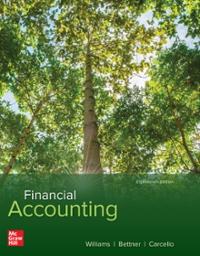Book: economics a contemporary introduction Chapter 17
5. The Coase Theorem Suppose a firm pollutes a stream that 1. Externalities Complete each of the following sentences: has a recreational value only when pollution is below a certain a. Resources that are available only in a fixed amount are level. If transaction costs are low, why does the assignment of resources. property rights to the stream lead to the same (efficient) level b. The possibility that an open-access resource is used until the of pollution whether the firm or recreational users own the marginal value of additional use equals zero is known as the stream ? The Coase Theorem Ronald Coase points out that a market c. Resources for which periodic use can be continued indefi- failure does not arise simply because people ignore the external nitely are known as resources. cost of their actions. What other condition is necessary? What . Resolving the Common-Pool Problem Why have authorities did Coase consider to be an efficient solution to a negative found it so difficult to regulate the fishing catch in the open externality ? ocean to allow for a sustainable yield? N Environmental Protection Four federal laws and subsequent m Optimal Level of Pollution Explain the difference between amendments underpin U.S. environmental protection. Identify fixed-production technology and variable technology. these four laws. Should the government set a goal of reducing the marginal social cost of pollution to zero in industries with fixed- Overuse of Resources What does it mean to say that a production technology? Should they do so in industries with common-pool resource is "overused"? Overused compared to variable technology? what? Case Study: The Lungs of the Planet Why does a solution to Positive Externalities The value of a home depends in part on the overharvesting of timber in the tropical rainforests require how attractive other homes and yards in the neighborhood are. some form of international cooperation? Would this be a suf- How do local zoning ordinances try to promote land uses that ficient solution to the deforestation problem? generate external benefits for neighbors? Problems and Exercises 10. External Costs with Fixed-Production Technology Review the situation illustrated in Exhibit 1 in this chapter. If the by using a demand-supply diagram; show this. Assume that the government sets the price of electricity at the socially optimal marginal private cost curve slopes upward. level, why is the net gain equal to triangle abc, even though 12. External Costs Use the data in the next table to answer the consumers now pay a higher price for electricity? What following questions. would the net gain be if the government set the price above the optimal level? a. What is the external cost per unit of production? b. What level is produced if there is no regulation of the 11. Negative Externalities Suppose you wish to reduce a nega- externality ? tive externality by imposing a tax on the activity that creates it. When the amount of the externality produced per unit of output c. What level should be produced to achieve economic efficiency? increases as output increases, the correct tax can be determined d. Calculate the dollar value of the net gain to society from correcting the externality







